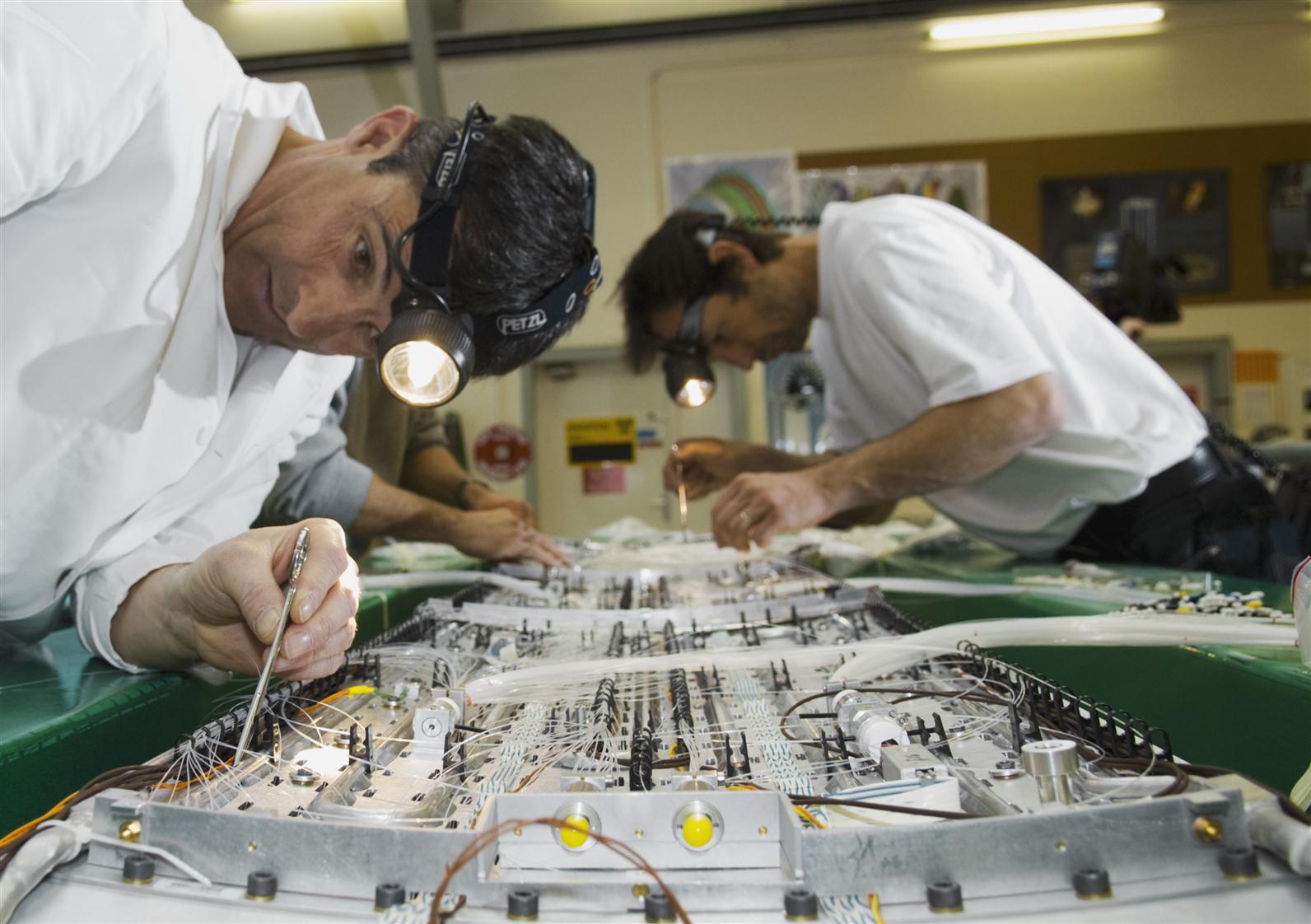Thirty-sixth jewel in the CMS crown
The thirty-sixth and final crystal supermodule has been installed in the barrel of the CMS electromagnetic calorimeter. Watch the video.
With the utmost care and attention, the thirty-sixth and final crystal supermodule has been installed in the CMS electromagnetic calorimeter barrel.
It’s 4.30 in the afternoon of 27 July as applause rings out in the CMS cavern. The installation has taken four hours but the final supermodule has finally joined the 35 others in the CMS electromagnetic calorimeter (ECAL) barrels, marking the end of an operation which began three months ago. This is a very important milestone for the whole CMS ECAL community, which has been working flat-out for several years on the development, construction and testing of this key component of the CMS detector.
The final supermodule (see box) arrived in the CMS cavern that same morning and underwent a series of tests to ensure it had not been damaged in transit. It was then placed on a girder to be mounted in the centre of the detector, inside the hadron calorimeter. The girder was then secured to an insertion tool - known as the "squirrel cage" - which rotates slowly, moving the supermodule into a position opposite the point on the barrel where it will finally be installed. The supermodule is then slid, like a drawer on rails, into the ECAL. The most crucial aspect of the whole operation is the correct positioning - to the nearest millimetre - of the supermodule on its insertion axis. The position of the supermodule parallel with respect to the rest of the calorimeter is then kept under close observation.
Due to the fragile nature of the supermodule (it comprises 1,700 lead-tungstate crystals), its insertion into the ECAL is a delicate operation. Throughout the manoeuvre, it was vital to avoid the supermodule touching the adjacent supermodules and run the of risk damaging it and them. "The nominal gap between the supermodules is three millimetres. However, depending on the assembly and construction tolerances, this gap can be reduced to less than a millimetre," underlines Olivier Teller, CMS ECAL project engineer. "Once the rails have been aligned, the only means of control we have during insertion is the naked eye!"
Installation of the thirty-sixth supermodule took just over four hours, which is very little compared with the whole day it took to insert the first. "We operated at an installation rate of one supermodule per day for the first 18 supermodules. The technique was refined as work progressed so in the second phase, for the 18 remaining supermodules, we were able to install two per day," explains Olivier Teller.
Once in place, the supermodule will be tested to ensure no damage was incurred during handling. "The next stage is cabling, which will take place in August," Teller continues. Three types of connection have to be made - electrical cabling (high and low voltage, temperature and humidity sensors), cooling circuits and fibre-optics.
Did you know?
The supermodules are three metres long and each weighs close to three tonnes. Each one consists of four modules containing 1,700 lead tungstate crystals in total. The thirty-six supermodules come together, in two crowns each containing 18 supermodules, to form the electromagnetic calorimeter barrel of the CMS detector. When particles collide in the centre of the CMS detector, incident electrons and photons will deposit energy in the crystals, which will emit scintillation light. The amount of light created is a linear function of the particle energy. The photodetectors attached to each of the crystals will detect this light and produce a proportional electronic signal.



